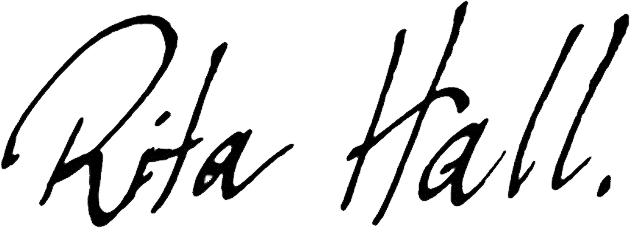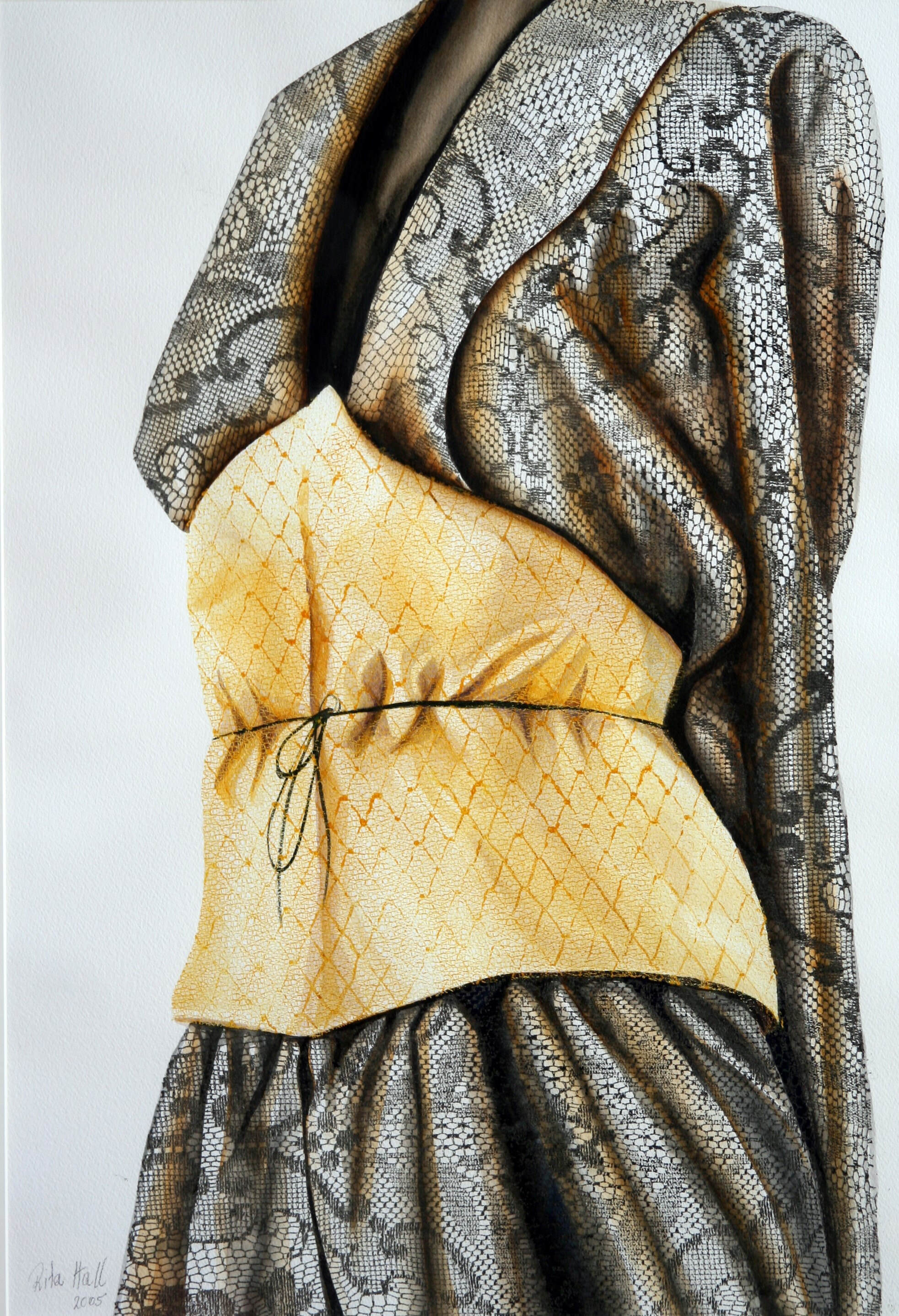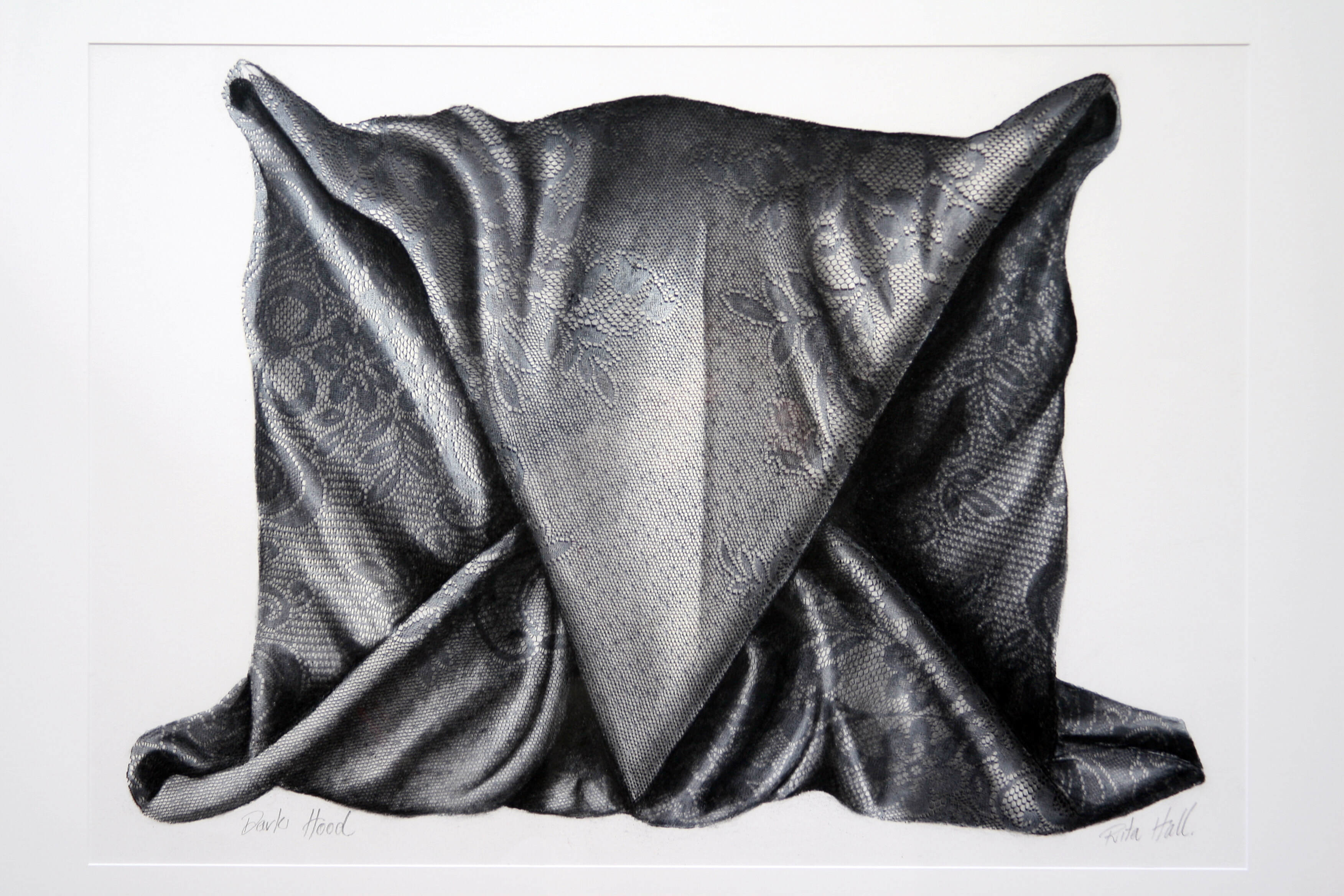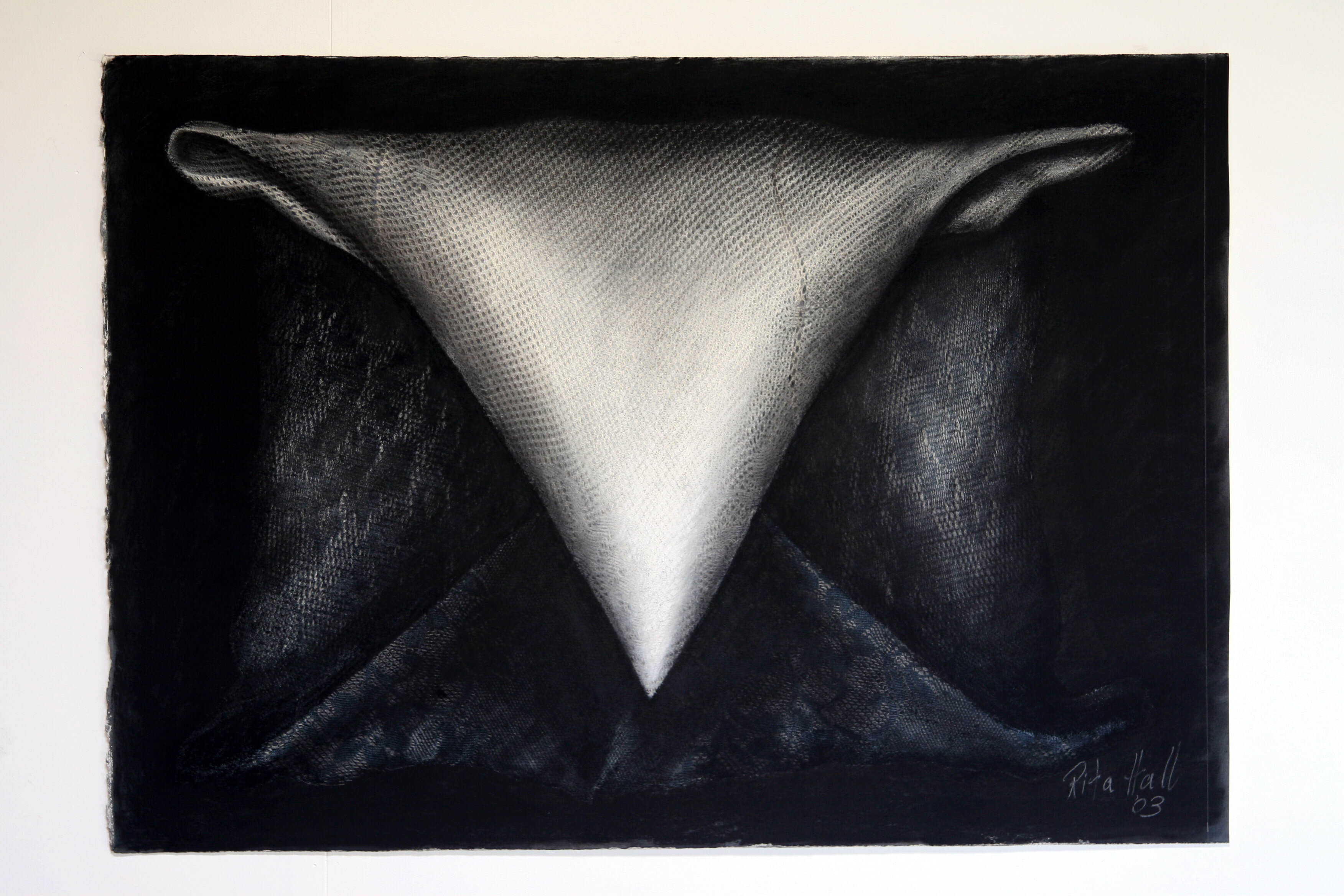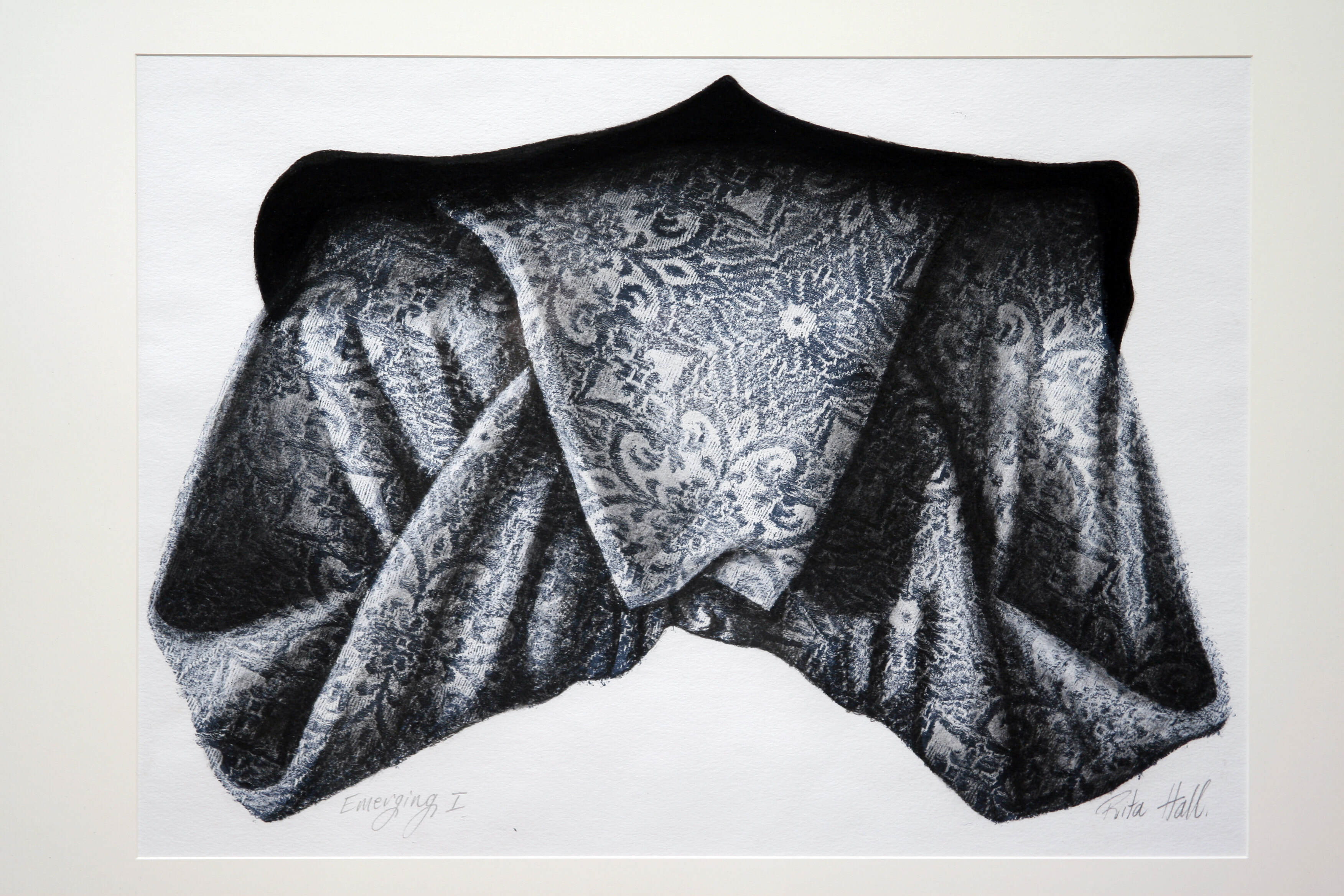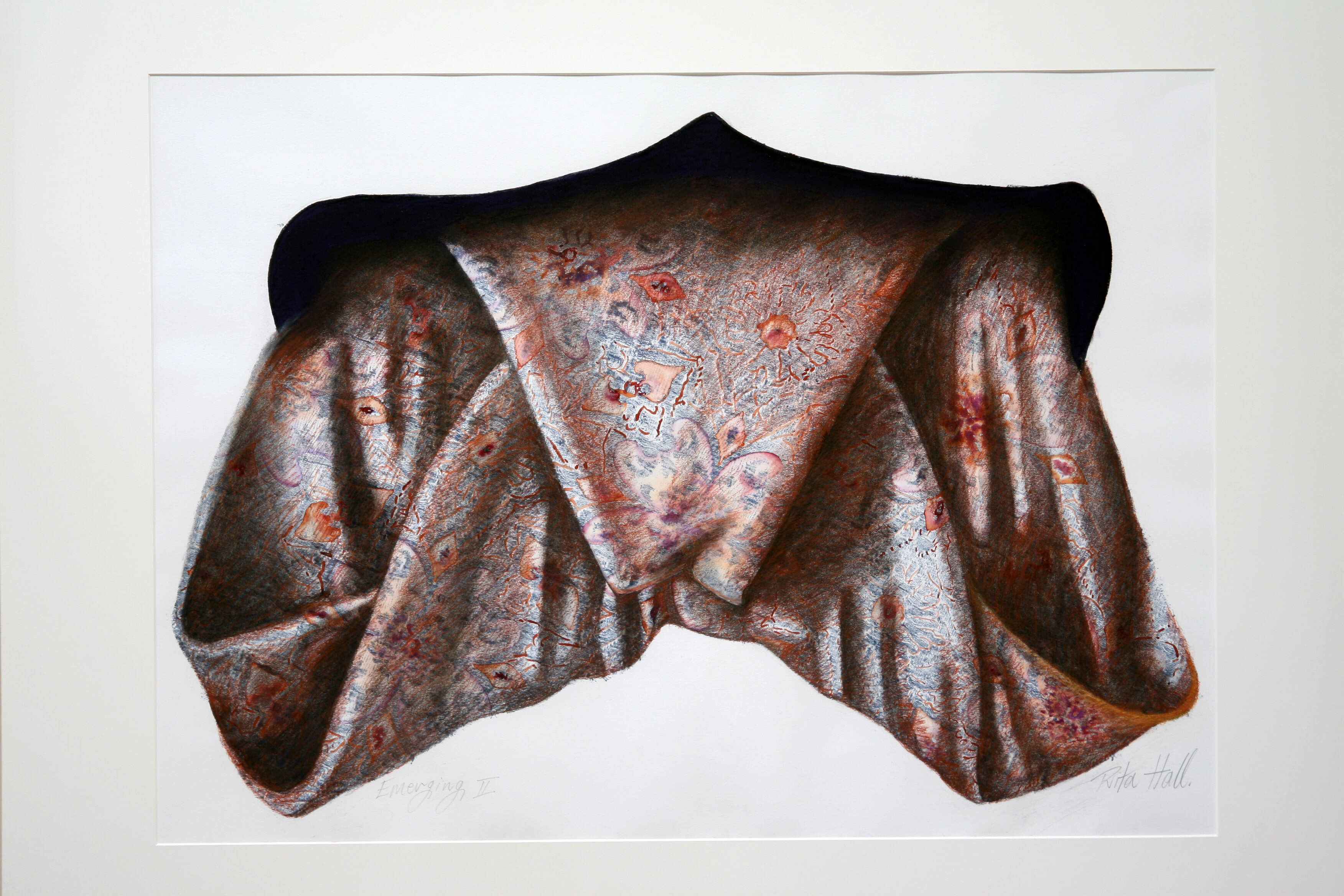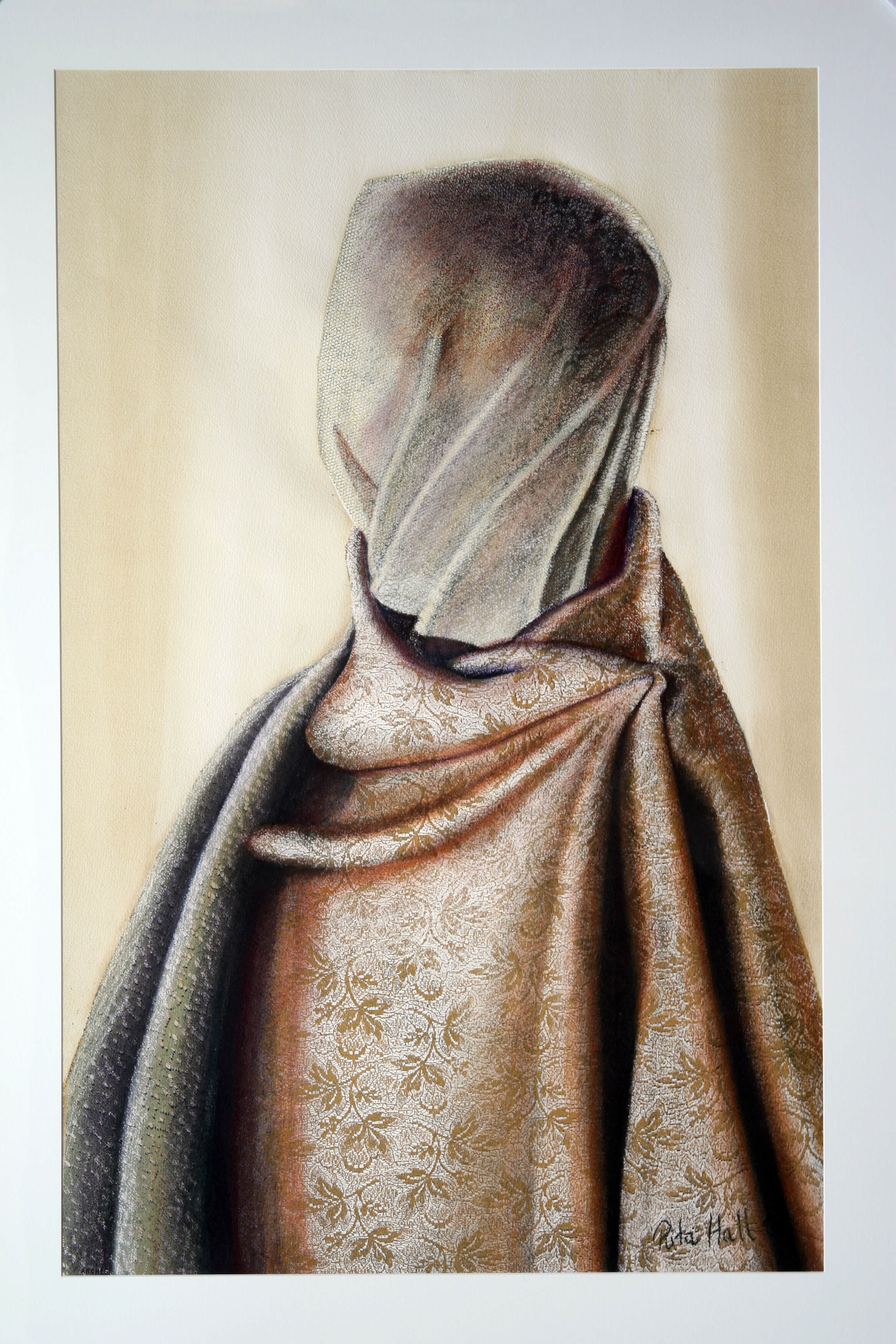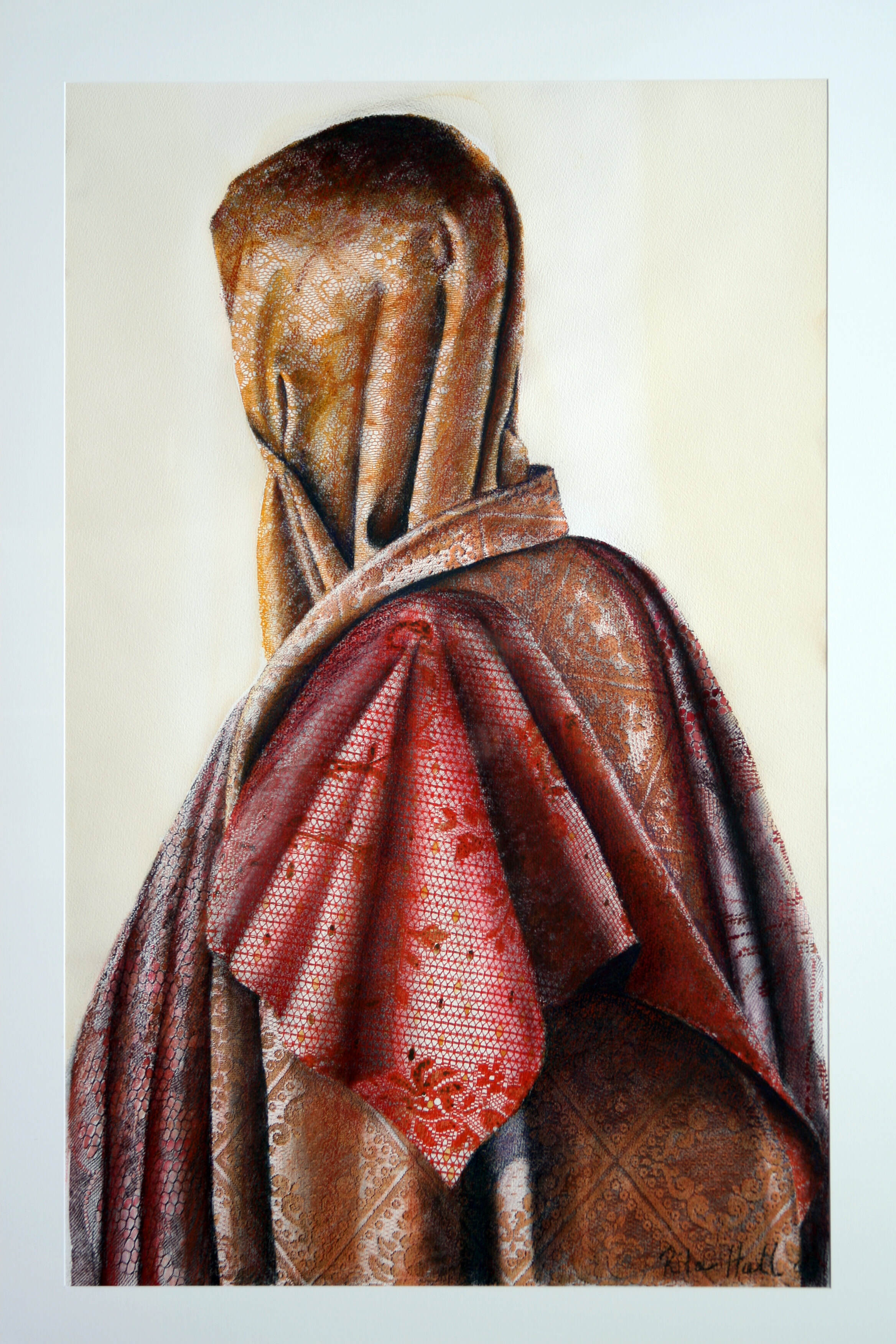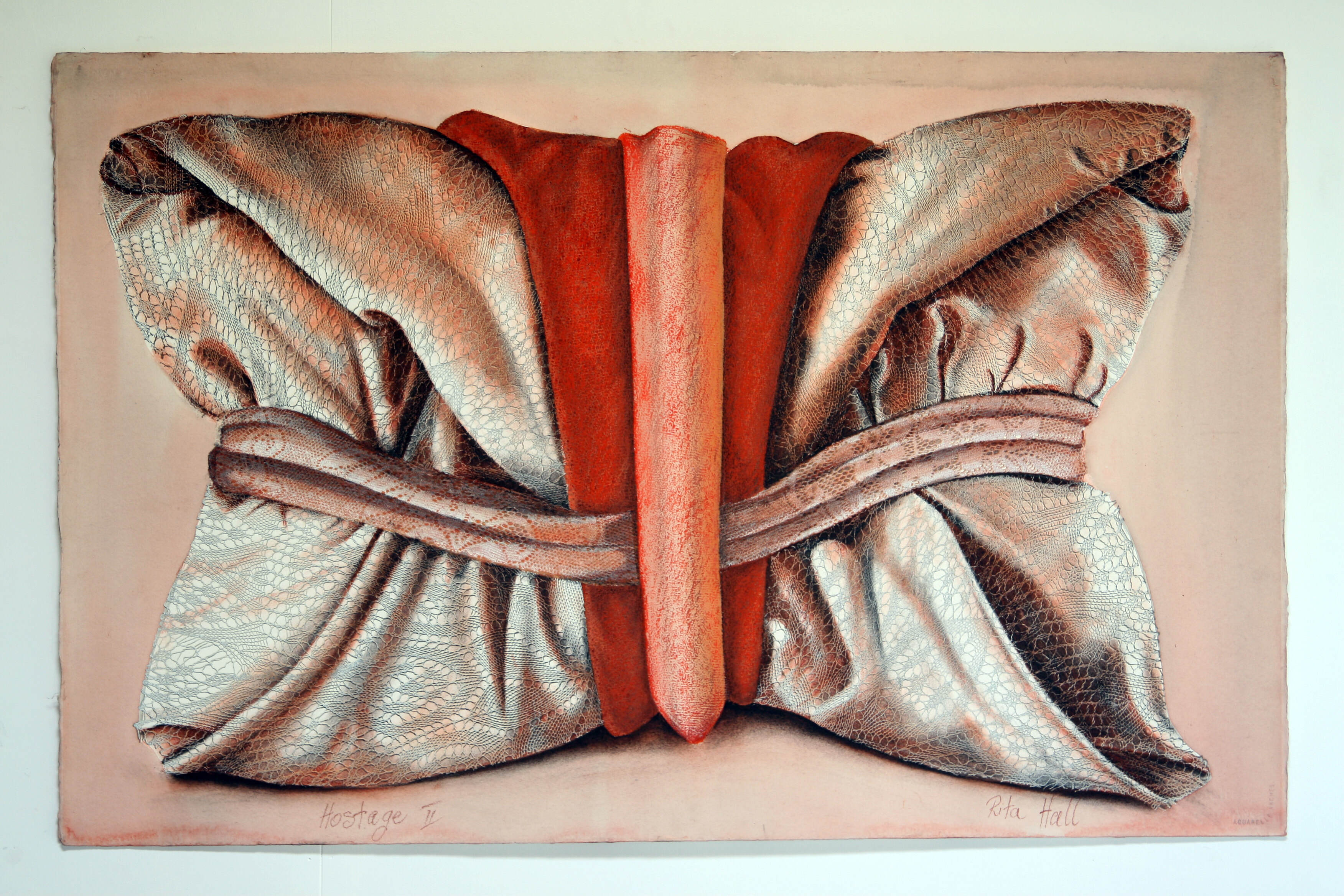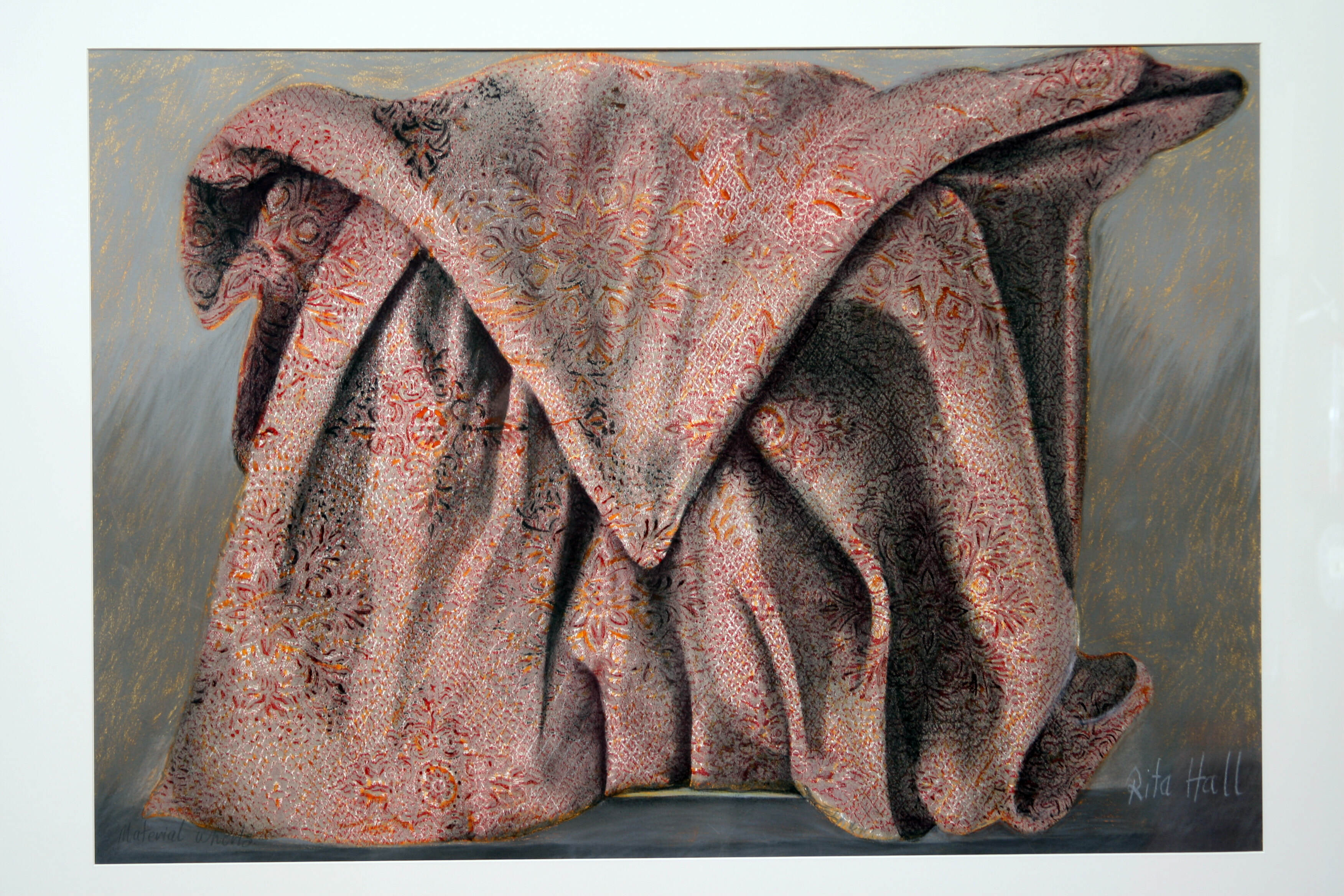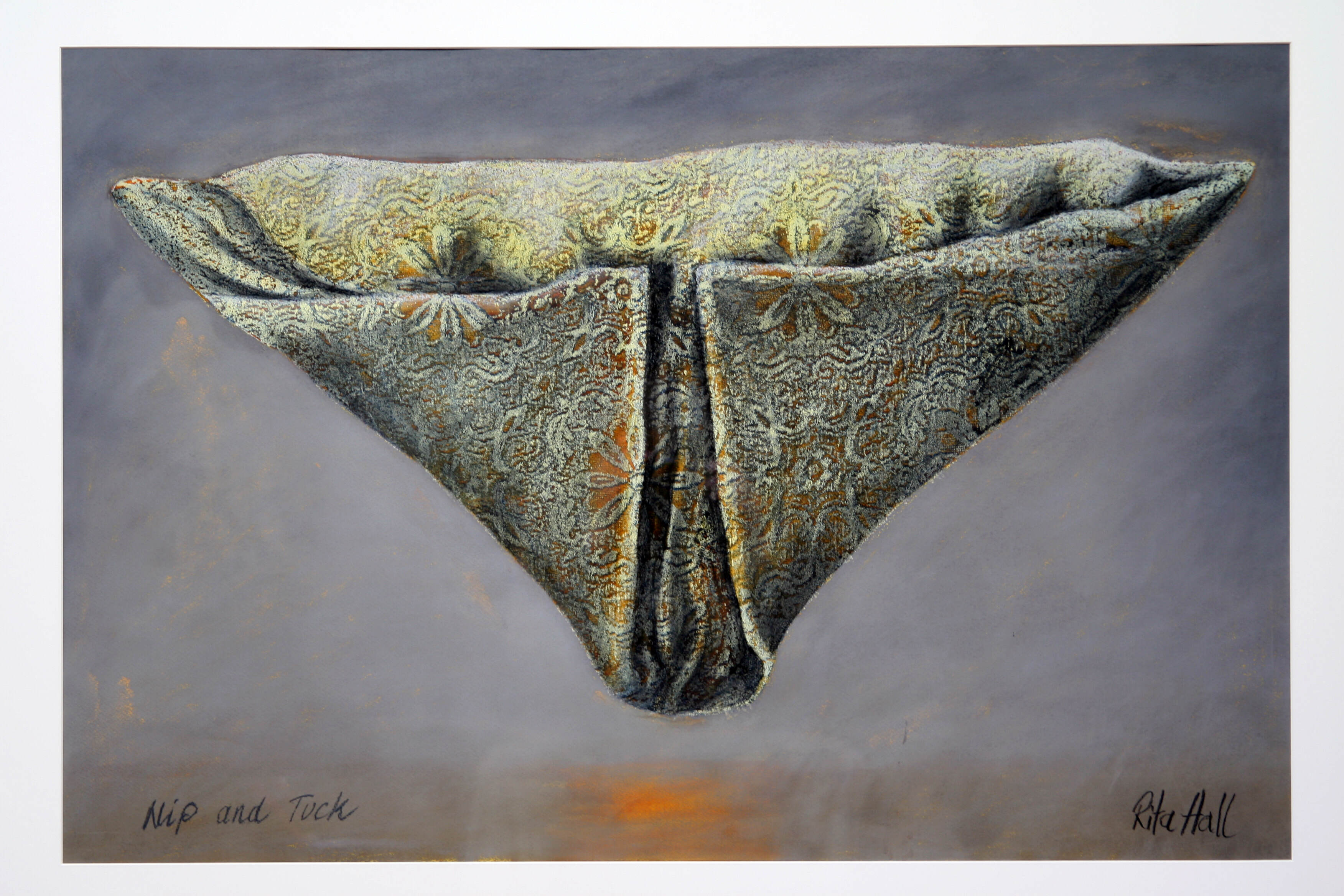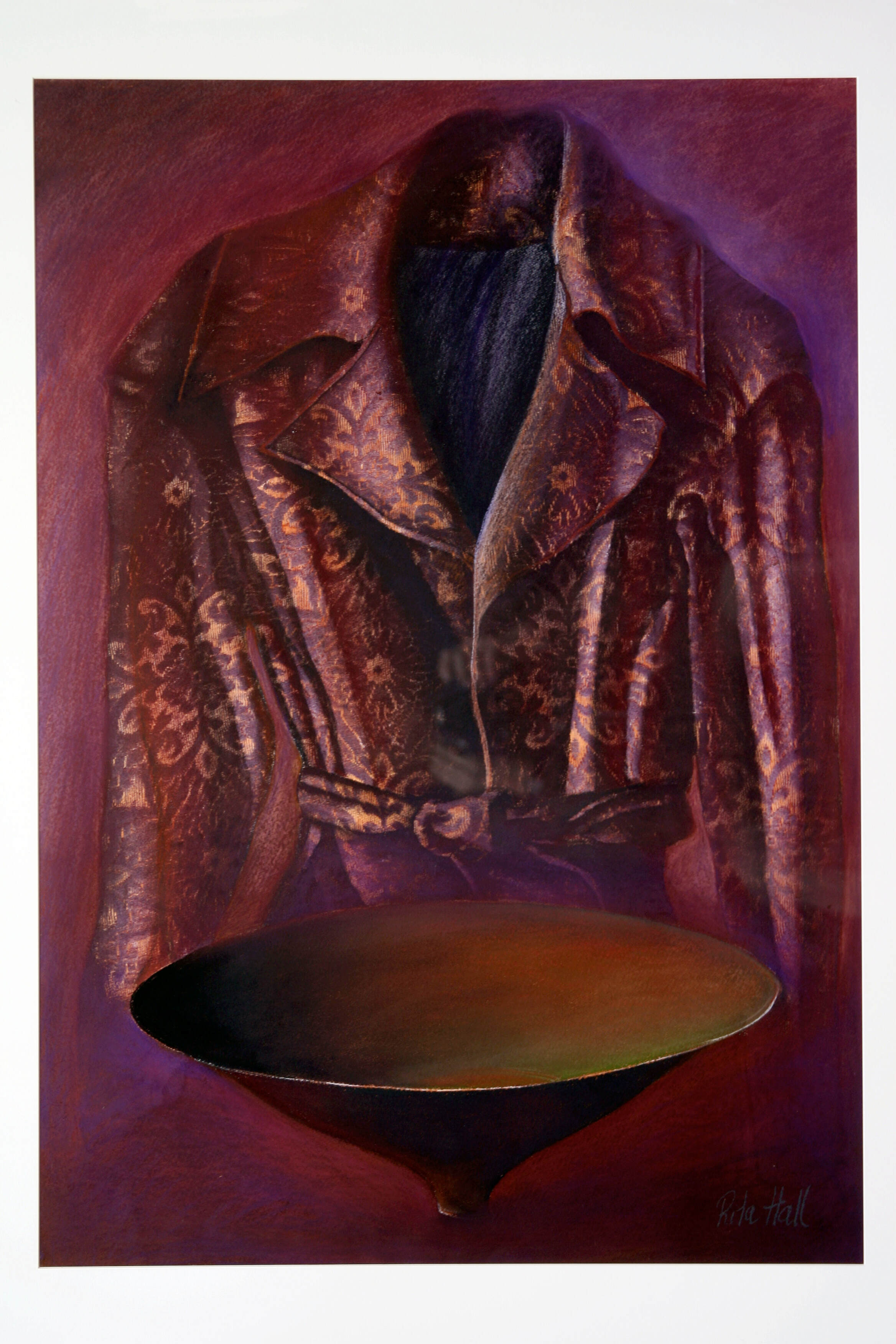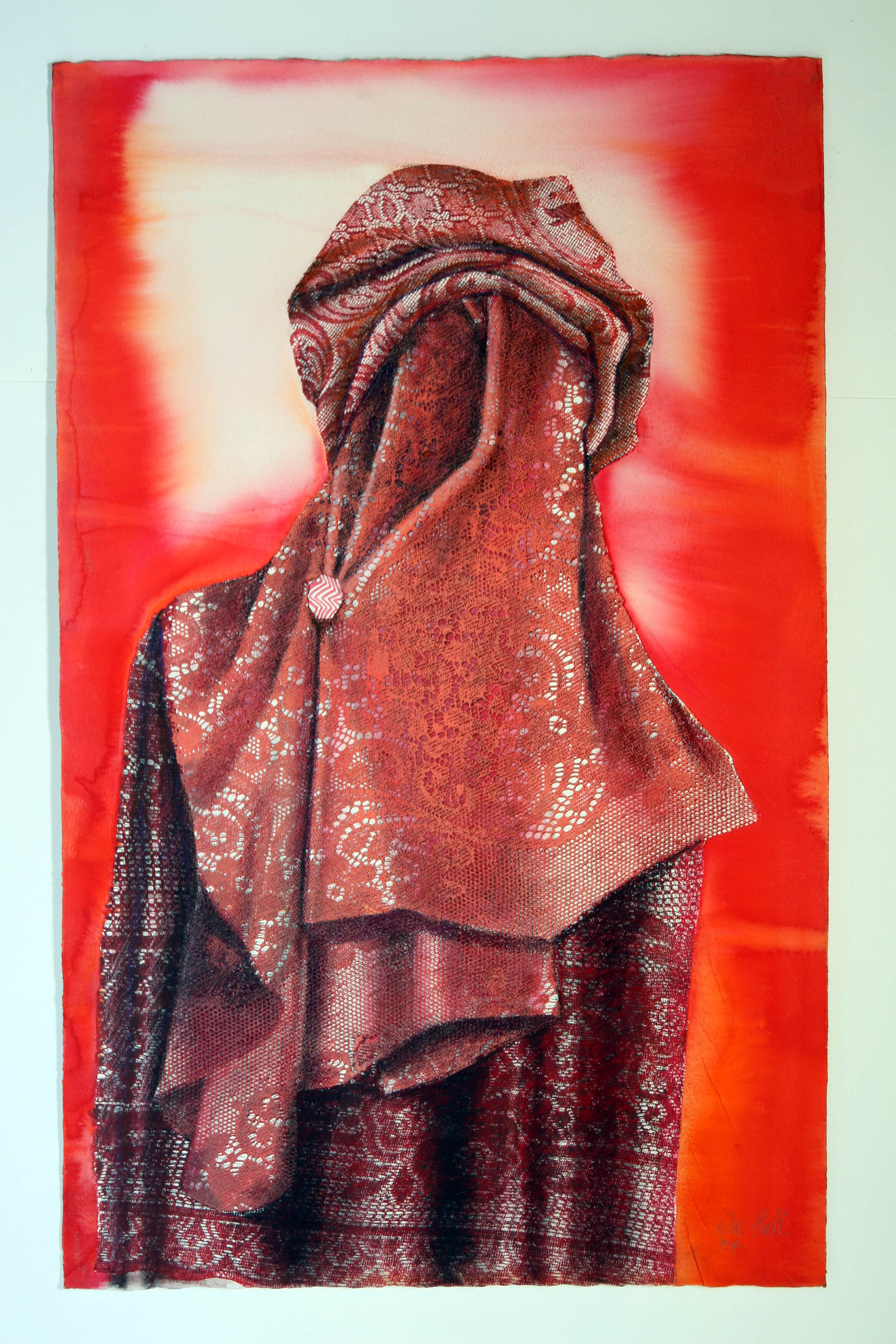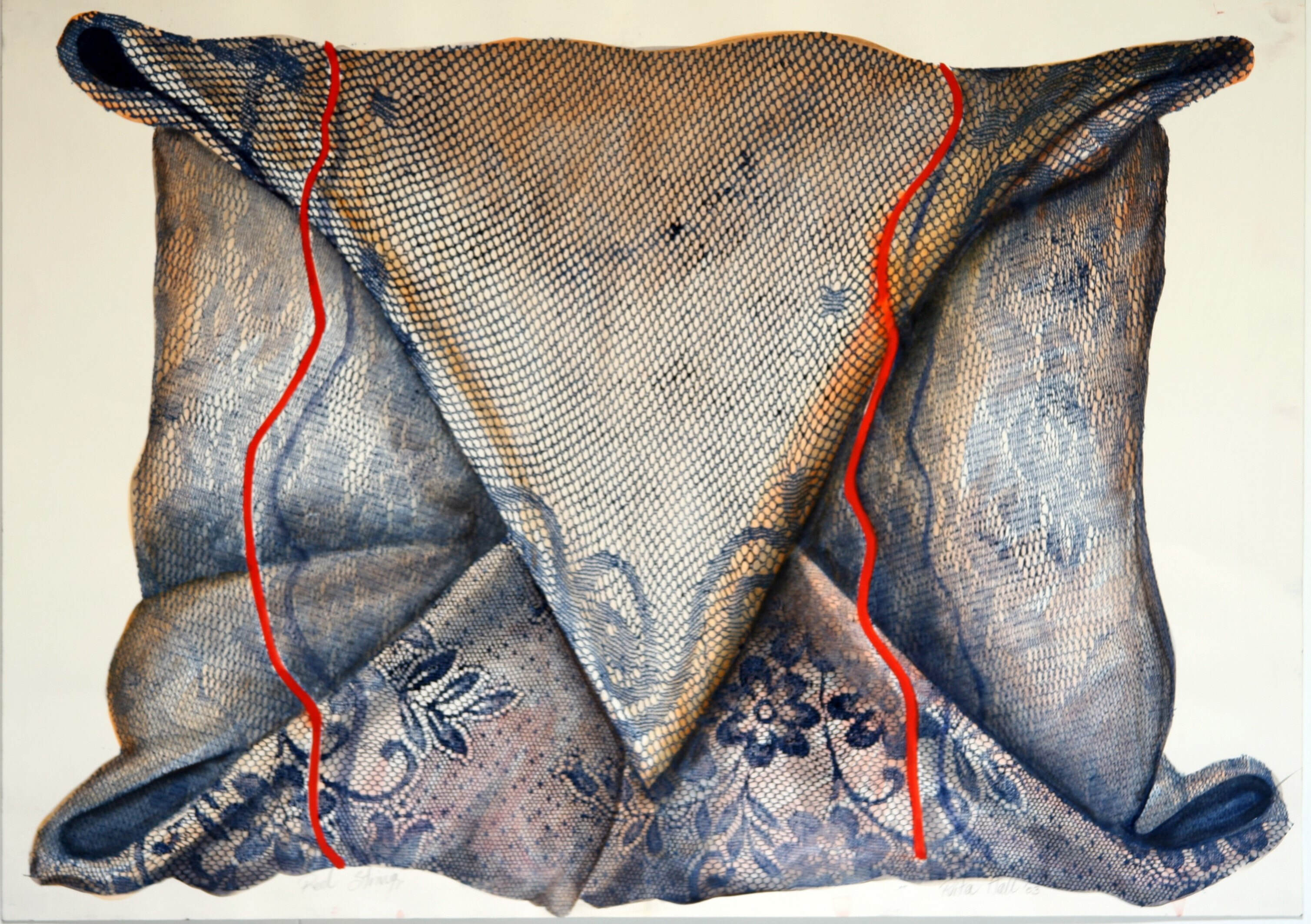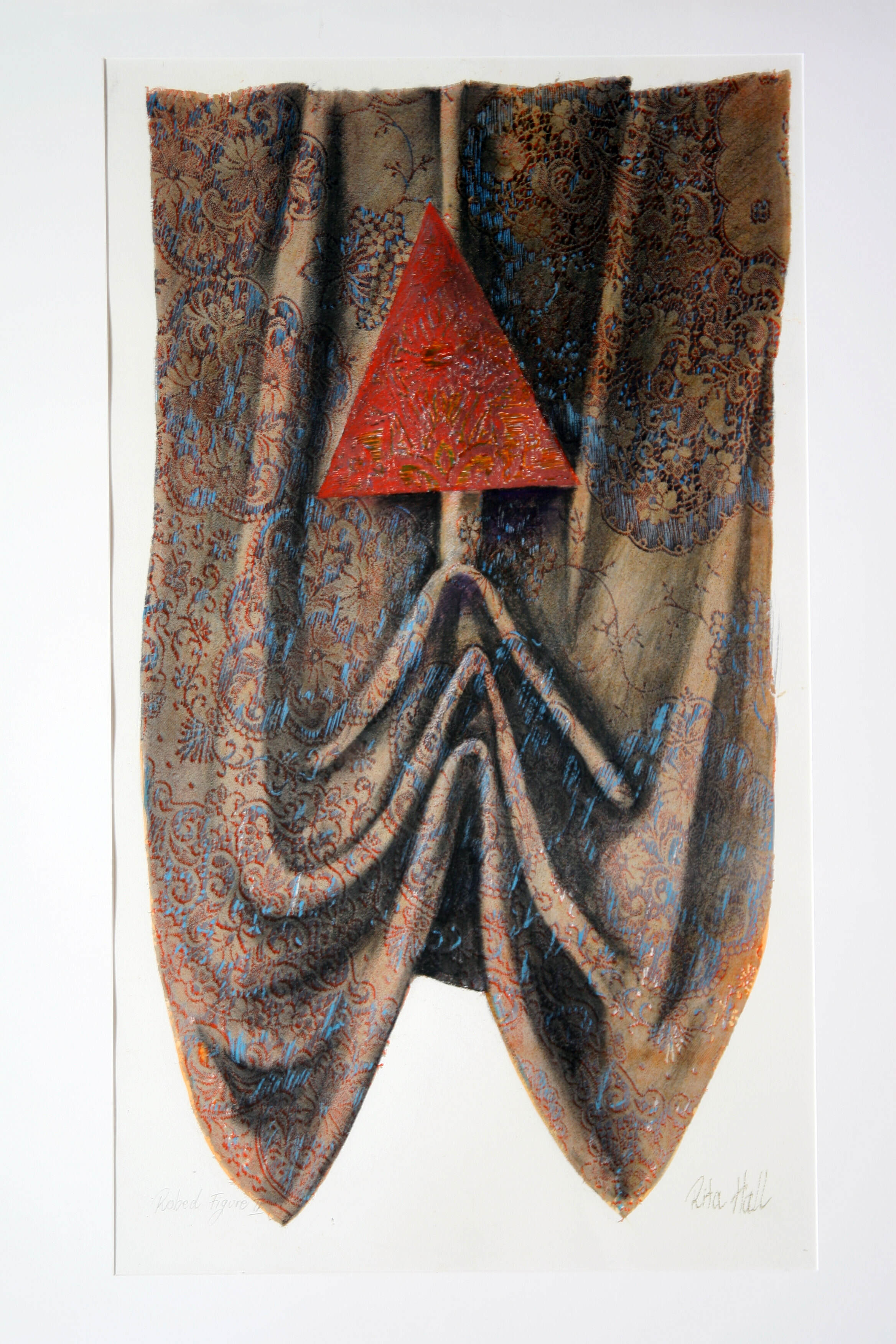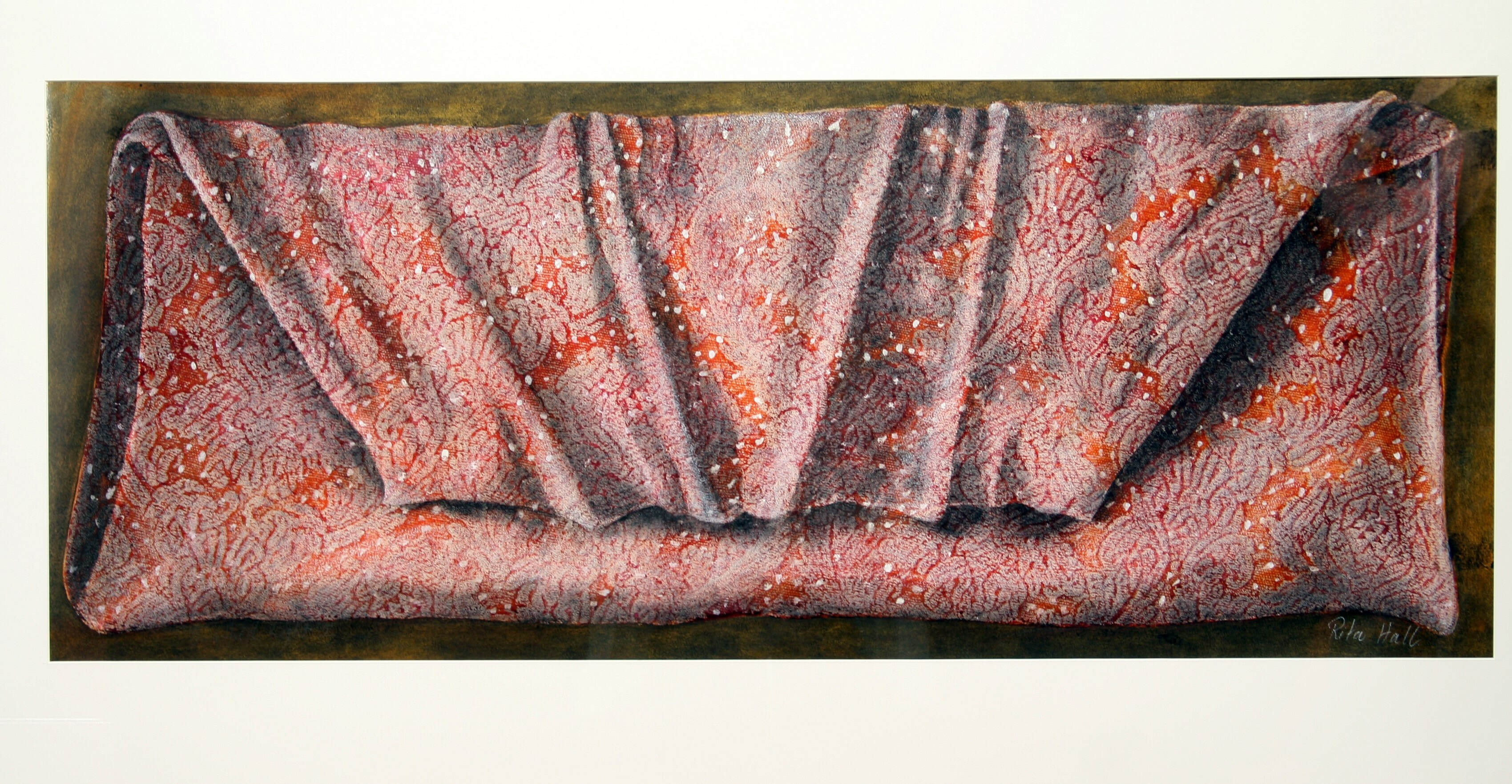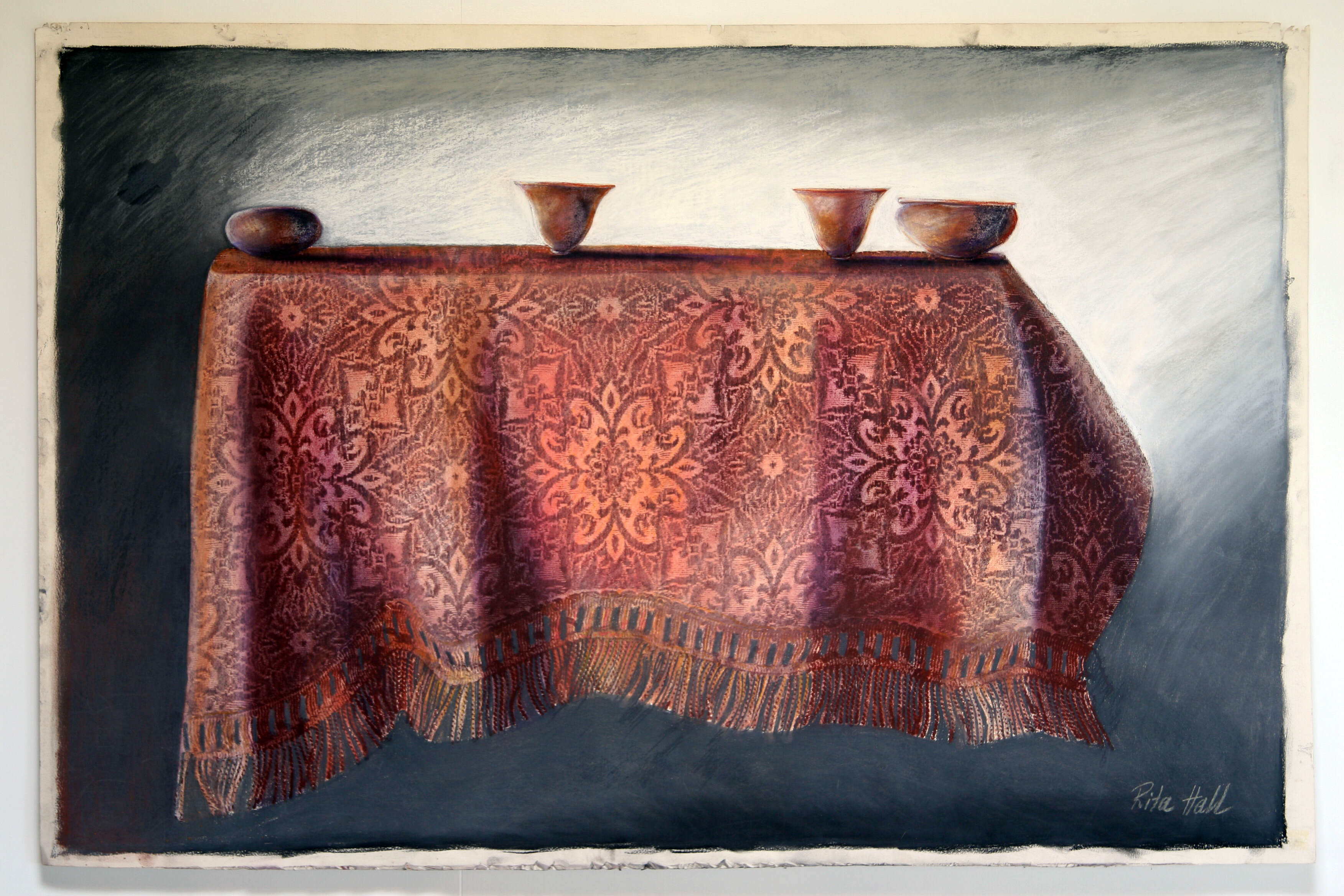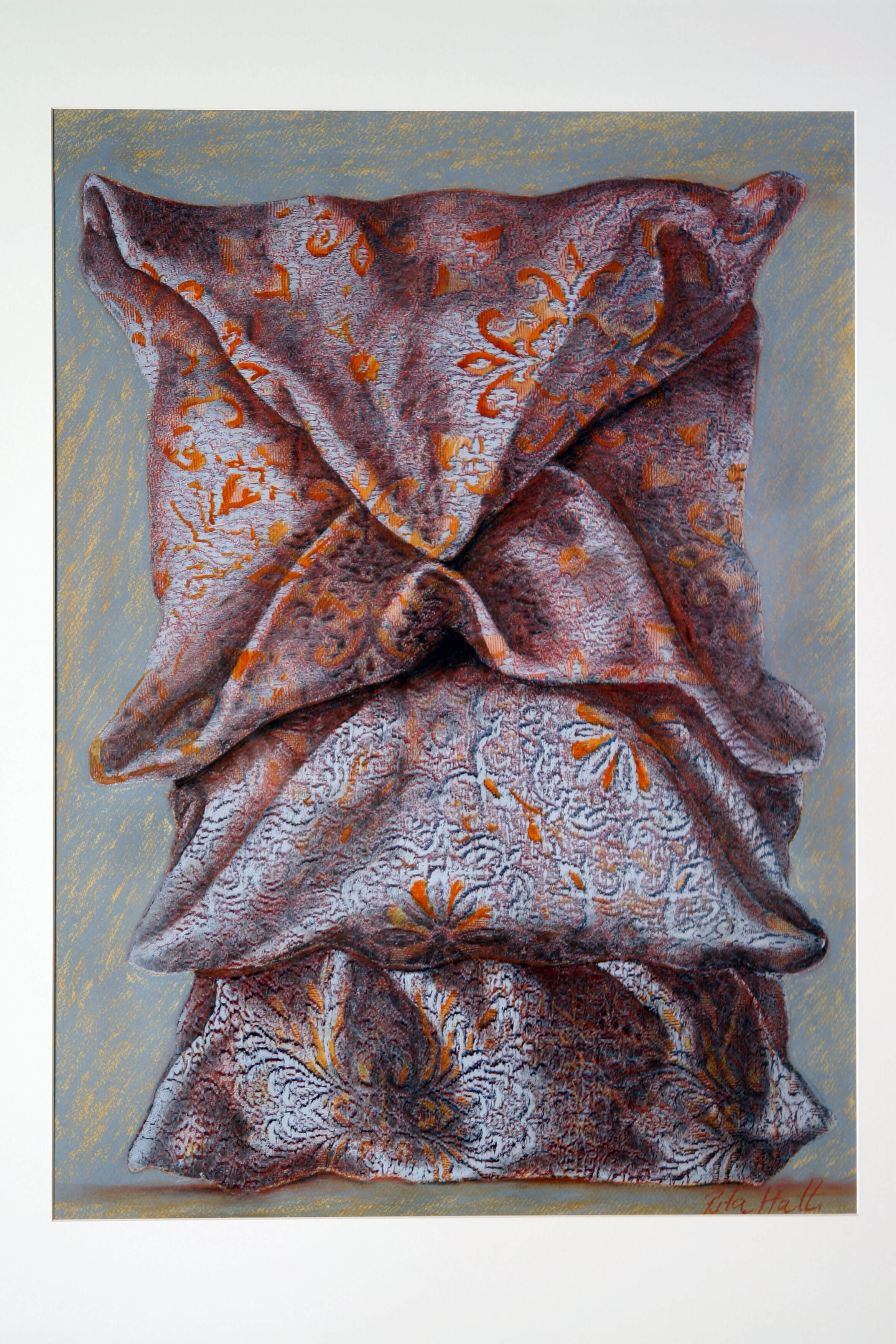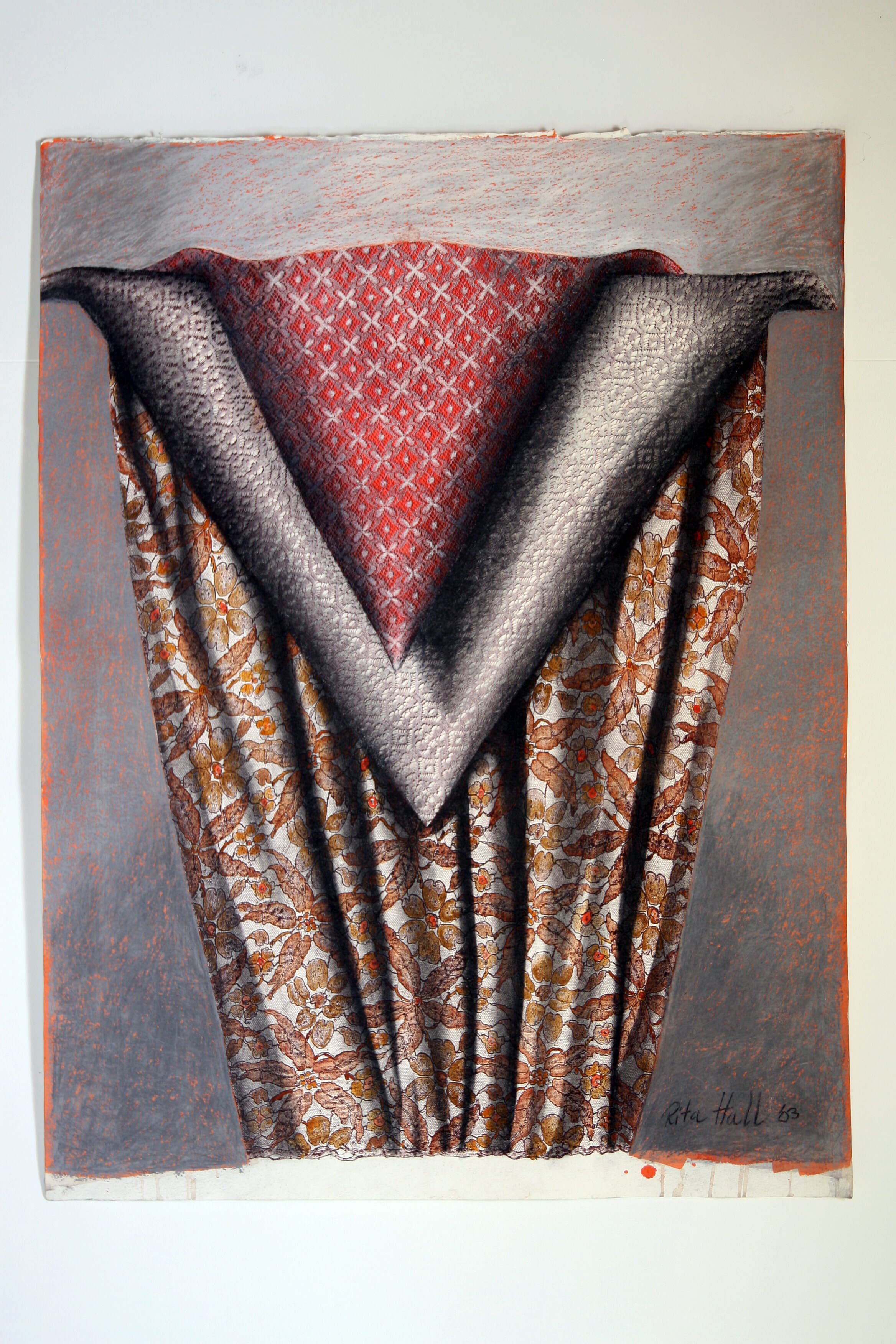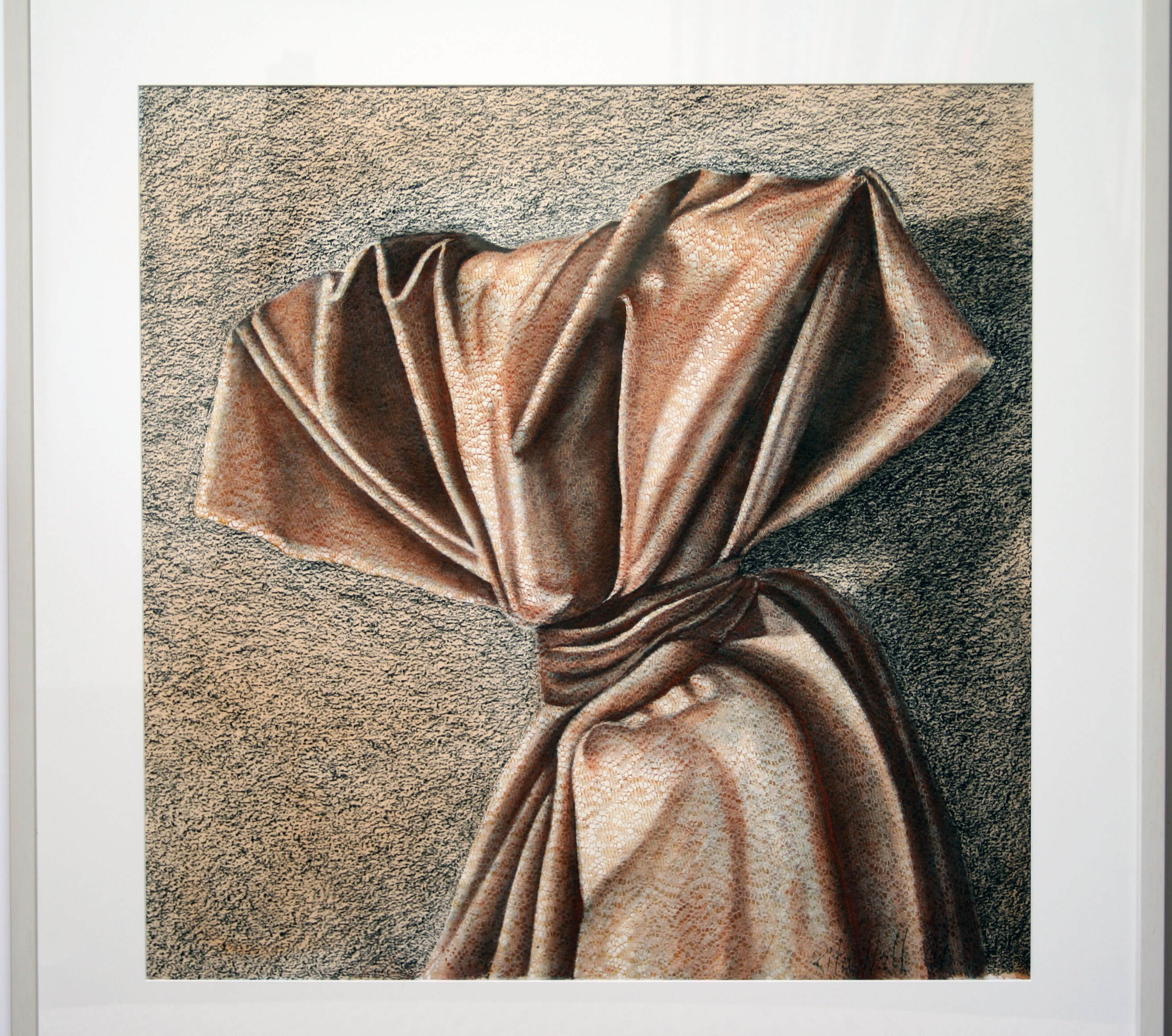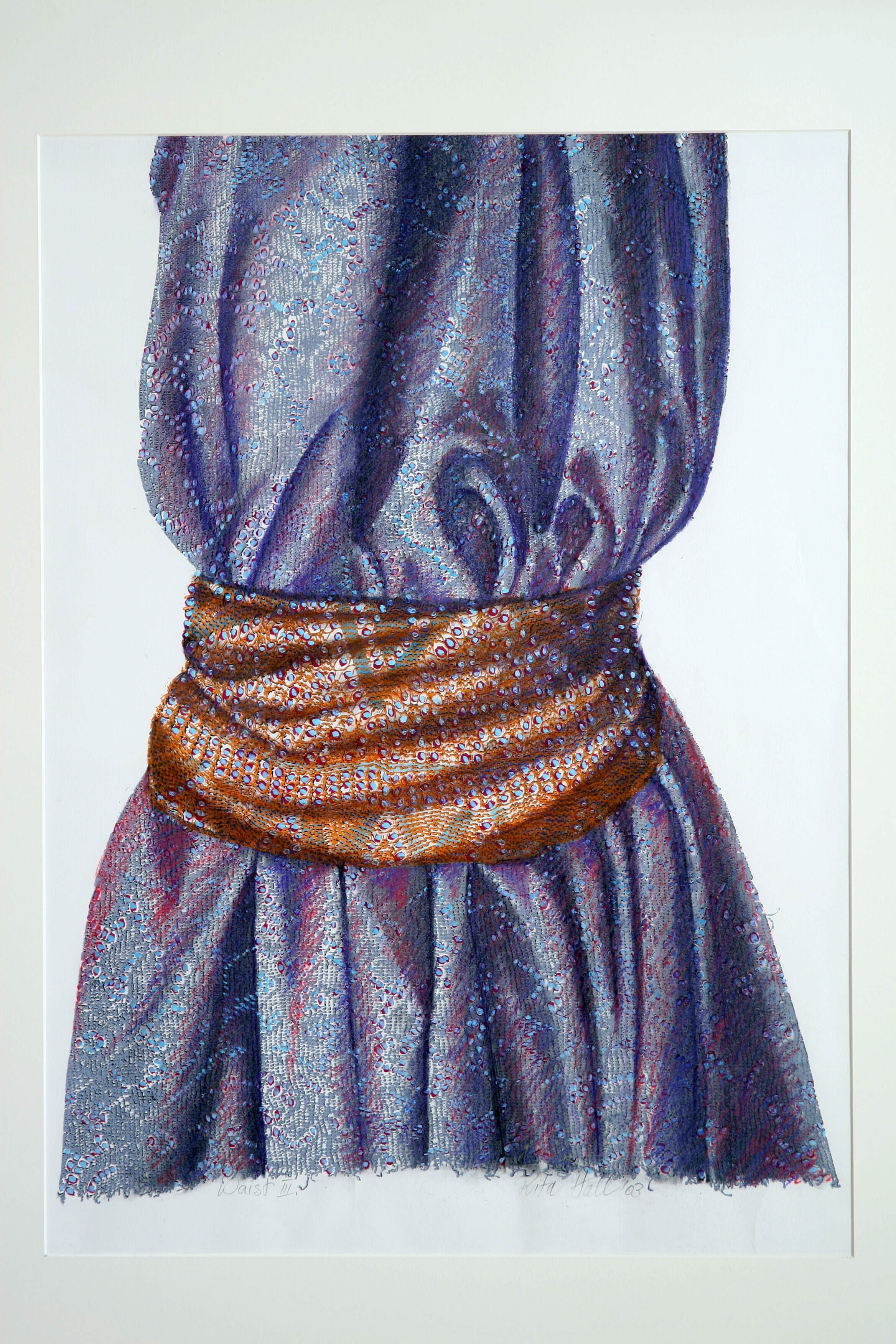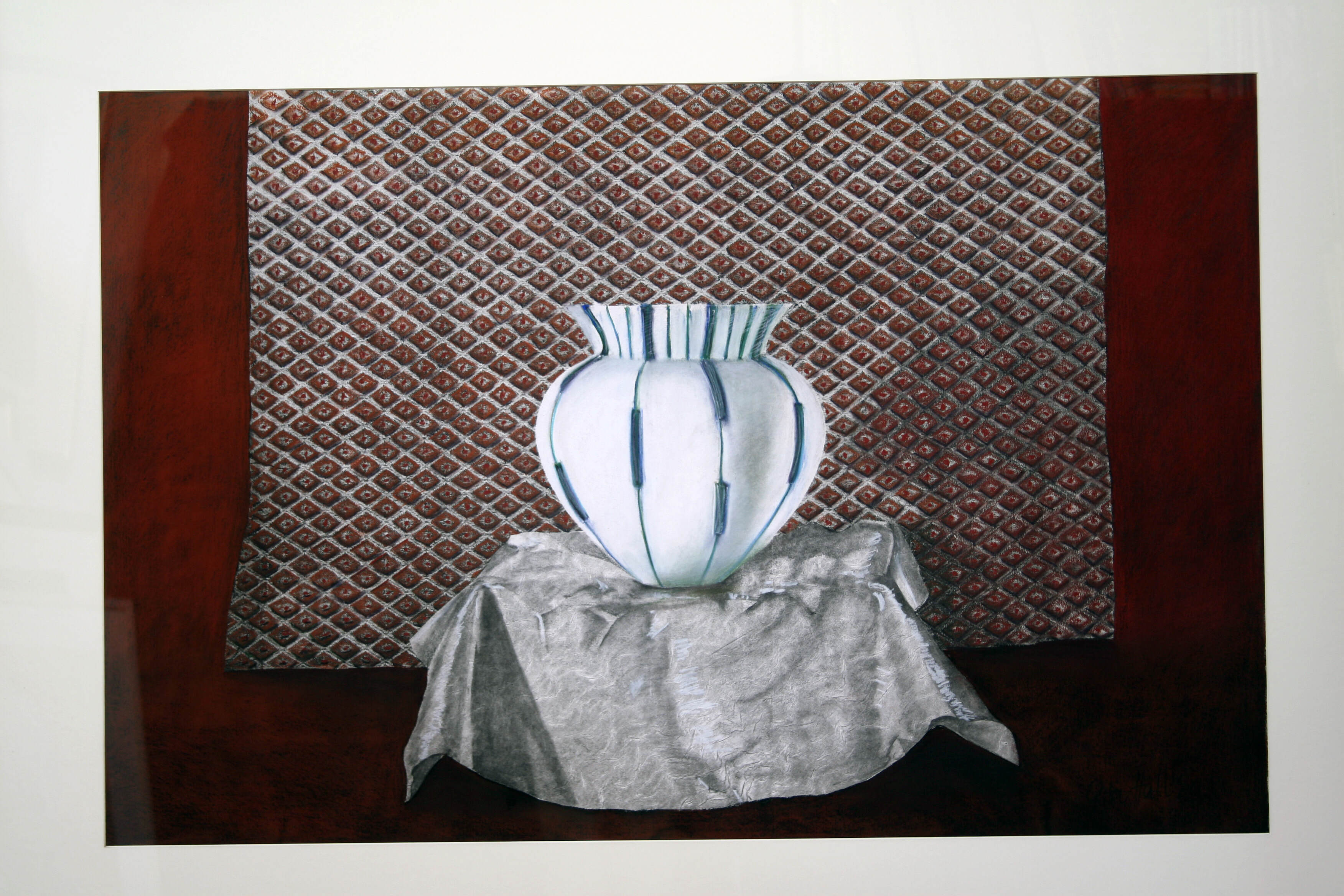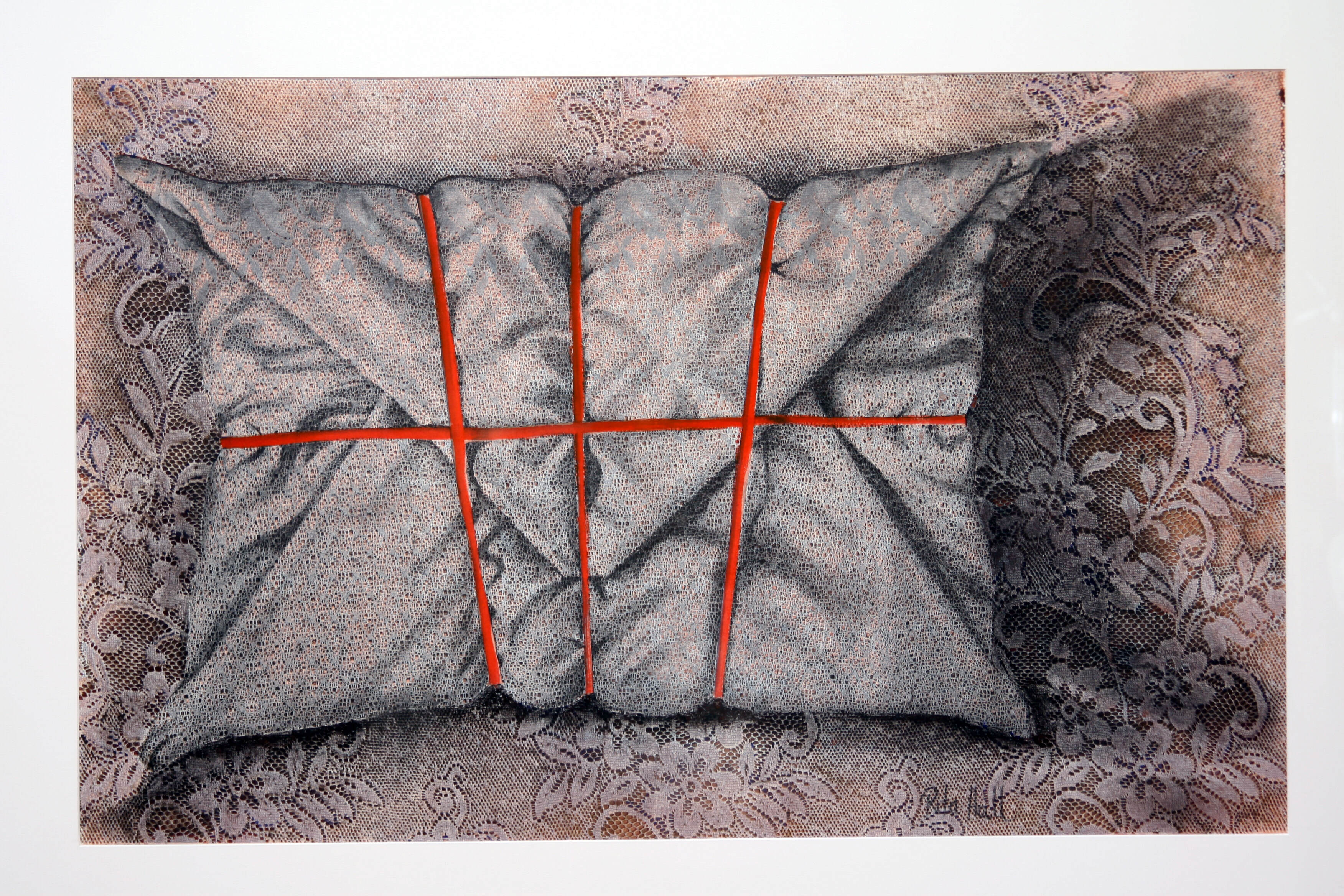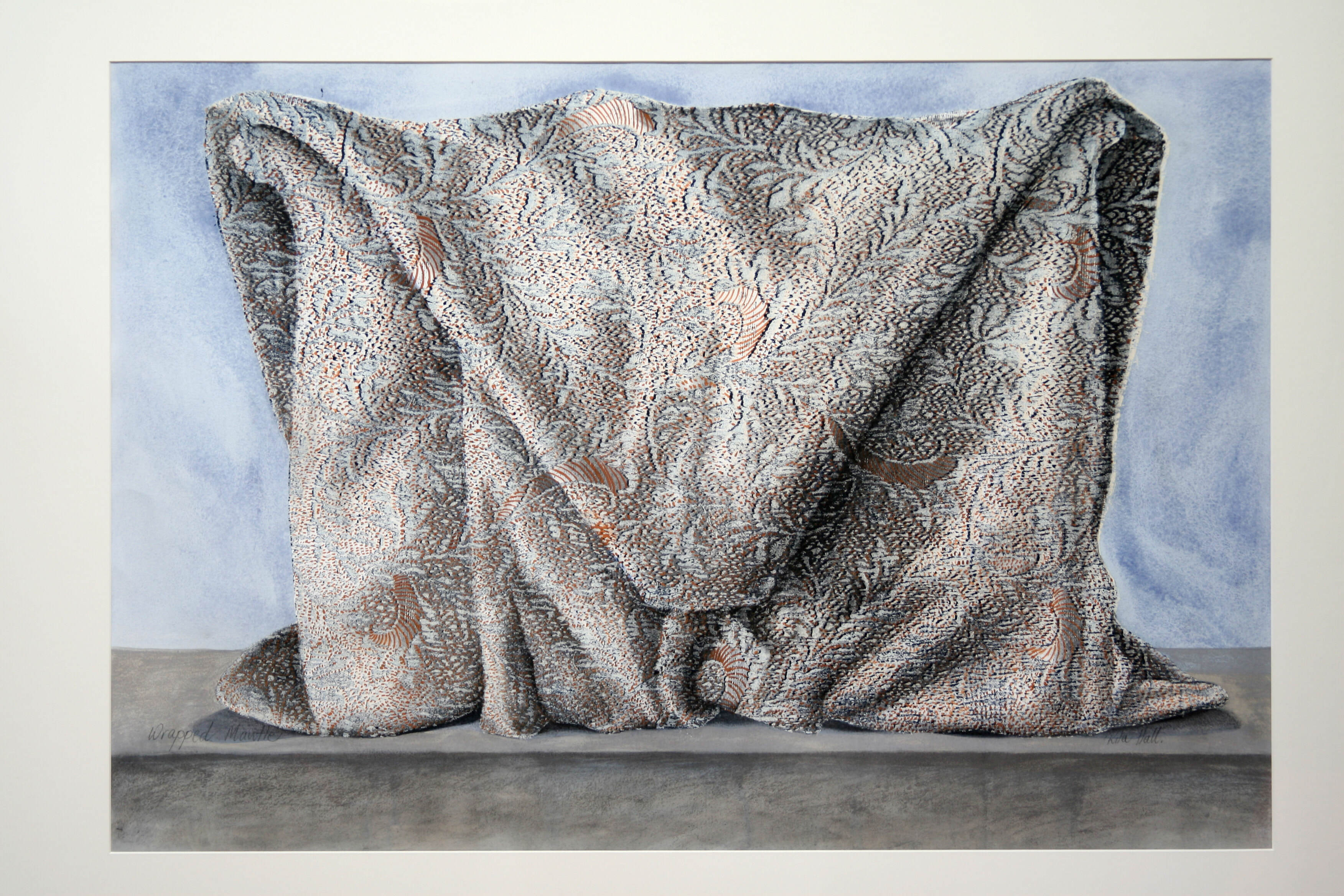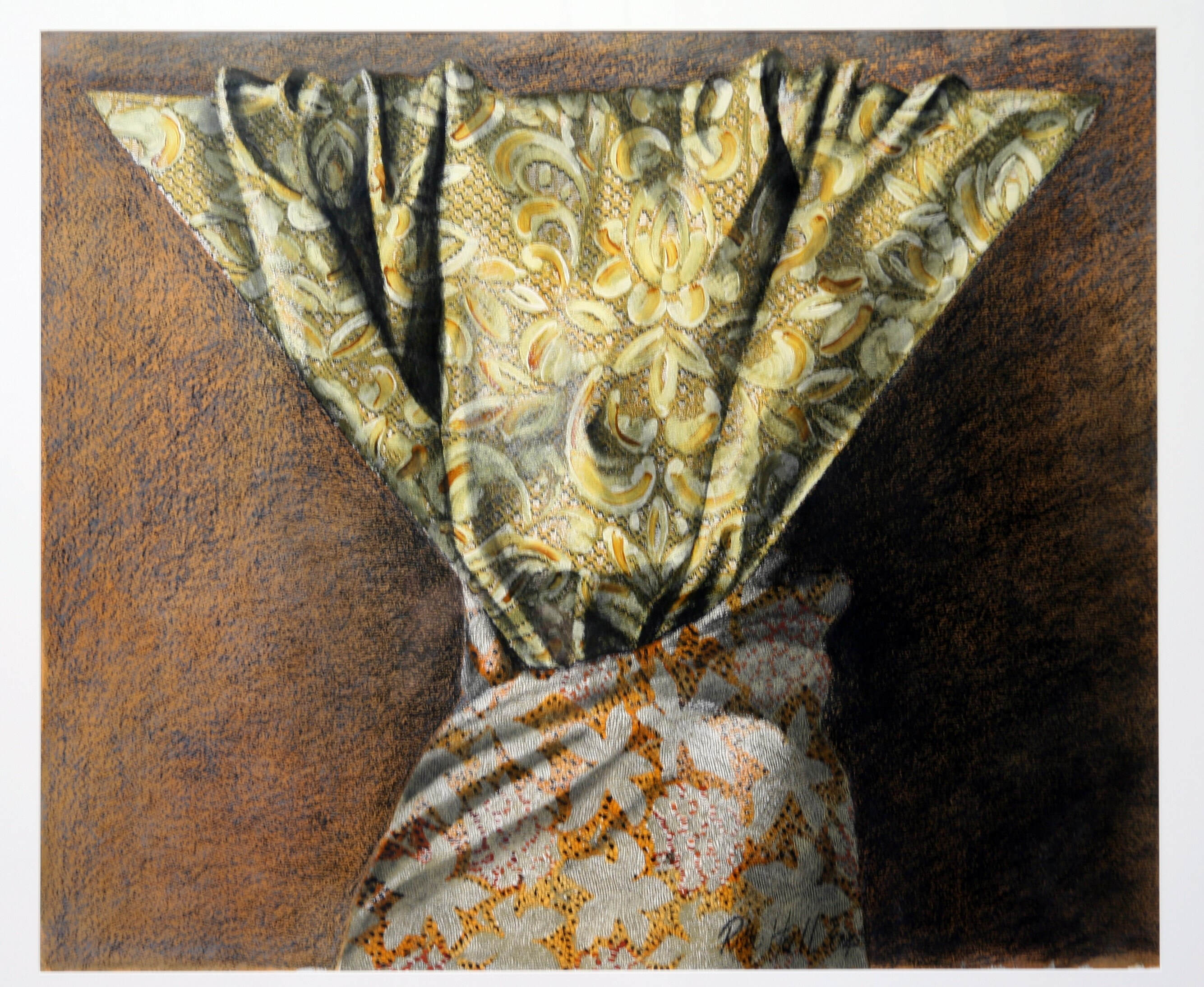The fabrics are supple, vivid and richly textured. They embrace snug envelopes and swathe sumptuous parcels. Some have rumpled features; others are free-floating shrouds or bright bolts from the blue. Out of everyday cloth Rita Hall conjures material objects with a provocative heart.
Playful and decorative, these new works on paper also stir the eye. They have the power to disarm. One moment you’re enjoying the stylish folded forms, the next they appear all ears, brows or enigmatic glimpses. In a way these are furtive bundles. Their true gift to us is not hidden within, but is made evident in the sheer vitality of their disguise. And so the viewer is caught up in the mystery of the masked, a kind of rapture of the wrapped.
Rita Hall happens to be a neighbour of mine and over the past two years I’ve had the privilege of watching these images taking shape. While there are links to her earlier work, this latest series marks a new departure. It has its origins in a time when the artist was dealing with a difficult illness – one that put at risk her eyesight, hearing and sense of self.
It seemed remarkable to me back then that anyone under this strain could contemplate facing their studio each day, let alone turn out work of such finesse. And yet this productive discipline proved to be a salvation. In a period of great vulnerability Rita was fortified by the creative process. As a result these images reflect not just her customary artistic verve but also a deeper emotional search for solace and refuge.
One of the most telling expressions of this desire is in the use of fabrics. An affinity for textiles has long been a defining strength of Rita’s work. Indeed, through more than 30 years of printmaking, she has repeatedly explored the possibilities of fabric textures and patterns. This is partly a legacy of her European background and a childhood surrounded by beautiful household cloths.
In this latest series, an instinctive feel for fabrics and printing techniques continue to be active elements. However, the finished work has the kind of intensity and rendered character that is closer to the tradition of drawing than any conventional branch of printmaking.
The starting point is a single object – typically a wrapped shape - which Rita constructs, a phase that may take a few hours or many days. “I want it to be interesting and powerful,” says Rita, “it has to speak to me.” While her art experience and training come into play in this modeling, there is typically a point at which the object takes over and assumes a life of its own.
The object is then drawn from direct observation and this drawing forms a template for the fabric itself. Once prepared with oil based inks, the fabric shape is put into the press, often more than once to build up a depth of colour. In the final phase of the process, the printed image is decorated with watercolour or gouache. By referring back to the original model the image is also worked up with charcoals and pastel to achieve its full strength of expression.
As with her earlier series which dealt with objects such as rounded stones and vessel shapes, these fabric envelopes concentrate on the power of singular objects, often poised in mid-space. There is an immediate aesthetic pleasure in such compositions. But whereas the ‘bowl’ images could at times appear remote and hard-edged, this new work engages the viewer with its wit, soft warmth and allusive charm.
Instead of flat surfaces there are opulent contours and shadowed ridges. This detailing gives many works an almost animistic quality. You start with an anonymous object and then the cloak of formality slips to disclose a wrinkled brow, a mask or impudent glance. Thus, on one level the images operate as elegant still lifes, while on another they have a quirky physiognomy all of their own.
A telling aspect of these apparitions is their garb. In the adaptation of old-fashioned materials like lace and brocades as the basis for her prints, Rita encourages us to see traditional fabrics afresh, to admire their intrinsic grace and artistry. And by enfolding the fabrics into such eccentric figures she makes the ordinary appear extraordinary.
Interestingly, these are also the fabrics of a different generation – of our parents and grandparents. They evoke the feel of sitting rooms with patterned curtains and lace cloths, and bulky settees with anti-macassars. Many of us grew up with these fabrics. The designs and soft textures were part of our tactile learning and often provided our deepest sense of comfort. To see them re-visited in these images is a reminder of childhood days when one felt wonderfully cosseted and secure – yet also blissfully free to construct fanciful worlds, incorporating whatever materials came to hand.
Something akin to this kind of delight is manifest throughout this series. Even the more ominous images project an intuitive joy in the act of creation. And for all their quirky drama, perhaps the greatest gift of these bundles is to enfold us in this process of instilling new life into still life.
Quentin Chester
